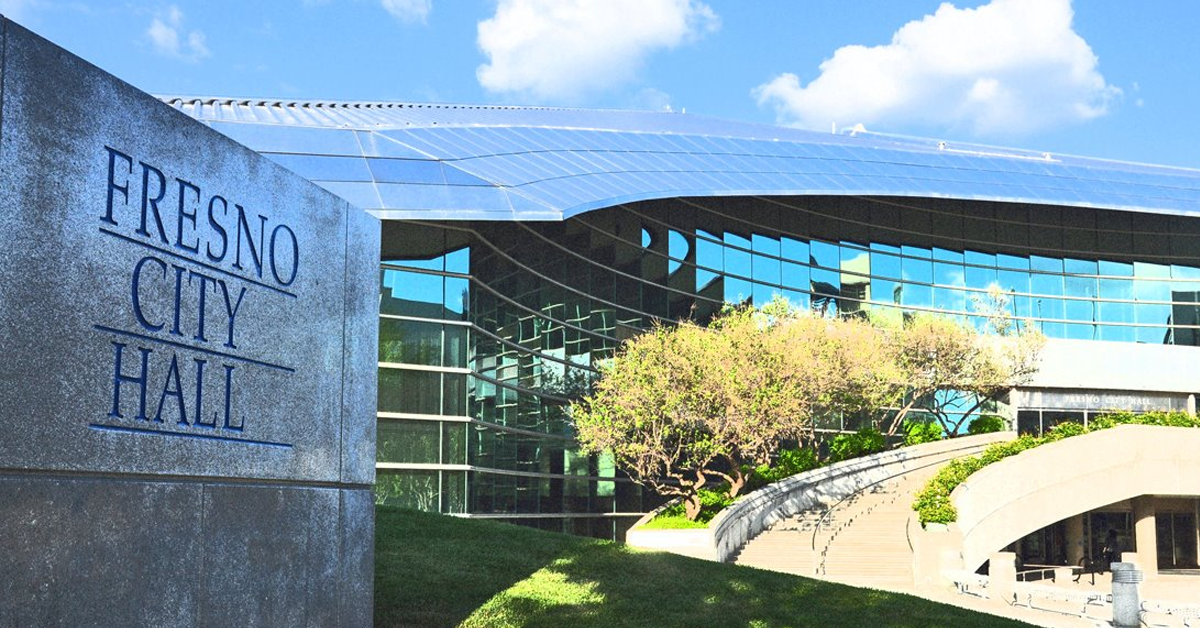Government representatives sometimes must resort to the ol’ “misdirection” play to help common sense carry the day.
That appears to be the case with the Herndon substation control building fight at Fresno City Hall.
The City Council last month once again debated whether to add the PG&E Herndon substation control building to the Local Register of Historic Resources.
In the end, the council voted to do nothing. That paves the way for PG&E to reapply for a permit to demolish the 1930s-era structure, which is what the company wanted to do all along.
How the council got to that point is most instructive about government.
First, the context.
As I wrote in June for the CVObserver, PG&E operates a substation in the 7400 block of North Weber Avenue in the far distant stretches of Northwest Fresno. This substation includes a two-story building that was once home to the substation’s control functions – hence the descriptive term “control building.”
The control building has been largely empty for many years. PG&E wants to tear it down.
PG&E applied for the demolition permit in April. Since the building was built in 1931 and therefore is more than 50 years old, the application automatically triggered a review by the local Historic Preservation Commission. The commissioners, with staff support, recommended that the control building be added to the Local Register of Historic Resources.
The commissioners’ thinking: The building’s Art Deco style is distinctive and rare in these parts; the building was part of the early 20th century energy revolution that helped transform the Central Valley; we’ve torn down too many old, beautiful buildings and shouldn’t add this one to that list of shame.
I found it hard from staff reports to figure out PG&E’s point of view other than the building serves no useful purpose to the utility; the building’s location on a live substation renders it inoperable by a third party; all this talk about tearing down our past is overwrought grandstanding in this particular case.
On top of that, you’d almost have to be Lewis and Clark to find the darn thing.
Now we come to the Sept. 20 council meeting. After several delays, the two sides battled one last time. In one corner was the city’s Development and Resource Management Department, represented by Historic Preservation Specialist Laura Van Onna. In the other corner was PG&E, represented by spokeswoman Erica Cabrera.
Van Onna in her brief overview described the control building as
“a hidden gem…. This building is not a maintenance shed that was constructed for temporary purposes, but a concrete monument with artistic merit that was meant to last.”
Cabrera was even briefer in staking out PG&E’s position. She asked that the council take no position at this time. She said PG&E had recently withdrawn its demolition permit application. She said more talks might resolve the City Hall-PG&E conflict.
Cabrera then played her ace:
“Substations are within the jurisdiction of the state (and) the California Public Utilities Commission.”
A building placed on the Local Register of Historic Resources is a building with legal constraints on its future disposition. City Hall wanted to place a building on the register against the building owner’s wishes. The City Attorney’s Office said that’s OK. Cabrera said some powerful players further up the food chain might have other thoughts.
No one in the Council Chamber had to be told the obvious: A court battle loomed.
The debate now moved to the council dais. Things moved fast.
The council president usually speaks last in such affairs. Council President Esmeralda Soria spoke first this time.
“I’d like to further understand some of the points she (Cabrera) just raised,” Soria said.
Soria made a motion to postpone the issue yet again “until I get some more clarification.” Council Member Luis Chavez seconded the motion (however, judging from the video, this was done with a distinct lack of enthusiasm).
Council Member Steve Brandau, whose District 2 is home to the control building, said the issue had been postponed enough.
Said Brandau: “I don’t think I’m of a mind to postpone one more time…. We just need to move forward.”
Noting that there are “very few historic buildings in North Fresno,” Brandau made a motion to accept staff recommendation that the control building be placed on the register.
That led to a brief flurry of chatter about procedure involving Soria, Brandau and City Attorney Doug Sloan. Soria, just minutes earlier, had made a motion. Brandau’s motion went to the back of the line.
Council Member Paul Caprioglio, without waiting for recognition from Soria, jumped in with his two cents.
“If the owner of the property doesn’t want a historical designation and all of the ramifications that come with that, then I would not support a motion like (Brandau’s)…. I wouldn’t want anybody to tell me how to run my property,” Caprioglio said.
Council Member Garry Bredefeld was next. He represents Northeast Fresno and, over the years, has been every bit the protector of private property rights as Brandau.
Bredefeld had Cabrera return to the public microphone. In response to Bredefeld’s brief questioning, Cabrera said PG&E currently has no firm plans for the control building’s site. She said the company simply wants more time to settle the jurisdictional conflict.
Council Member Luis Chavez asked Cabrera to walk him through the process that led to a demolition permit application winding up before the Historic Preservation Commission. Cabrera did so. Chavez said in such matters he usually defers to the wishes of the council member in whose district the building is located.
But Chavez didn’t add, “and I will do so this time.” And Brandau didn’t ask, “Council Member Chavez, would you please do so this time.”
In fact, Brandau all this time never sought out a second to his motion to accept staff recommendation.
Council Member Clint Olivier asked Cabrera to return to the public microphone. Olivier said he had been away from the dais, speaking to a constituent, and needed to get up to speed on the debate.
Olivier: “What is this thing?”
Cabrera: “It’s an old control building, built in the 1930s, that is on an existing substation property. So, it’s kind of an island within our substation property.”
Olivier: “Do you get many tourists?”
Cabrera: “No, there are security and safety concerns. The public would not be granted access to the property.”
Olivier: “What could it be used for?… Because we have heard there are people who see old, junky buildings that need to get pushed over and they have ideas for, like, ice cream shops and sandwich shops and stuff. What was this used for? Could we make it an ice cream shop or a sandwich shop for hipsters?”
Cabrera: “No.”
Olivier: “So, it’s just there.”
Erica: “Correct.
Olivier asked if the building has any value other than its “old, outdated architecture.” He asked if anything significant happened there. Cabrera said, “Not to our knowledge.” Olivier said it appears to have been some 50 years since the building “was useful.”
Olivier’s said the PG&E control building debate is comparable to the Producers Dairy controversy. I’m not fully up to speed on the Producers issue, but I think it has do with a private concern wishing to redevelop a portion of its property to meet changing market conditions but finds itself facing neighborhood/City Hall pushback. Regardless, the Producers comparison enabled Olivier to strike a blow for private property rights. Speaking of privately owned parcels caught in the redevelopment vs. historic preservation crosshairs, he said “there are others in the community who wish it to be a flower shop or a cigar shop or something where hipsters can drink craft beer or whatever. How great it could be. But the reality is that for me personally I have to defer to who owns it. Private property to me is very important. If there’s no private property, there’s no society.”
Olivier noted of the control building that “Thomas Edison never slept there or said something profound there.” He said of PG&E that “if they want to push it over, that is their right. If they wish to bring the Art Deco Society of Los Angeles to have a gala benefit, then that is their right. I am going to support whatever motion that will allow the owner of the property to dispose of it the way that they see fit.”
Olivier is termed out in January.
“I’ve got 90-some days left,” Olivier said. “This is probably my last opportunity to go on a rant about private property.” (I don’t believe that. Private property rights are under constant fire in California. Olivier will have plenty of opportunity in his remaining 12 weeks on the dais to protest the incremental socialization of our state.)
Olivier concluded his spicy and, I suspect, not altogether unplanned comments with a question: “Could I make a motion to let (PG&E) do whatever they want with their own property?”
It was at this point that what seemed to be a directionless debate quickly acquired focus.
City Attorney Sloan said there already were two motions on the floor (Soria wanted another postponement, and her motion had gotten a tepid second from Chavez; Brandau had wanted to accept staff recommendation to impose a historical designation on the control building, but his motion was delivered a definite lack of enthusiasm).
Before Olivier could add a third motion to the list, Caprioglio once again interrupted. Caprioglio said if the Soria and Brandau motions fail, “this issue is done.”
Caprioglio meant this: The failure of the Soria motion for delay forces the council to act immediately. The failure of the Brandau motion to act by accepting staff recommendation returns things to status quo ante, meaning the council has done its legal duty to vote on the 87-year-old building’s historical status and PG&E is thus cleared to reapply for a demolition permit.
“You’re happy,” Caprioglio said to Olivier. “Some people aren’t happy.”
Soria’s motion failed 2-4, with only Soria and Chavez voting yes.
Then came Brandau’s motion. With a haste that suggested his true feelings, Brandau said, “I don’t think I have a second.”
He didn’t. No one offered one. His motion died.
PG&E, most likely, will see to it that the Herndon substation control building dies in the not too distant future, as well. I suspect the reaffirmation of private property rights was the council’s intent all along – at least in this case.
Said Soria in conclusion: “We move on.”









